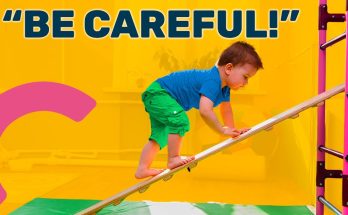Burping your baby is one of the most important yet sometimes challenging tasks for new parents. Babies are often gassy, and trapped air can cause discomfort, leading to fussiness, colic, and even reflux. Knowing the best ways to burp your baby can alleviate this discomfort and help them feel more relaxed. In this article, we’ll explore effective methods for burping a baby, particularly to help with colic, reflux, and gas.
Why Burping Is Important
Babies swallow air while feeding, whether they are breastfeeding or bottle-feeding. This air can build up in their stomach, causing bloating, gas, and discomfort. If the air isn’t released, it can lead to increased fussiness, discomfort, and, in some cases, colic or reflux.
Colic refers to episodes of excessive crying, usually occurring in the first few months of life, and often results from digestive discomfort. Reflux occurs when stomach contents, including air, flow back into the esophagus, causing pain and irritation. Burping helps prevent or reduce these issues by expelling the trapped air.
Best Burping Techniques
There are several effective methods for burping a baby, and you may need to try different positions to find what works best for your baby. Here are the most popular and successful techniques:
1. Over the Shoulder Method
This is one of the most effective ways to burp a baby, especially for babies who experience colic or reflux. Hold your baby upright, with their head resting on your shoulder and their body supported by your arm. Gently pat or rub their back while supporting their bottom with your other hand. The pressure from the gentle patting helps move the air bubbles to the surface, allowing your baby to release the trapped gas.
This position also provides comfort and security to your baby, as the closeness helps them feel soothed and safe. If your baby is suffering from reflux, this position may help because it keeps the baby upright, which can reduce the likelihood of stomach contents coming back up.
2. Sitting on Your Lap Method
For some babies, sitting upright helps them release gas more effectively. Place your baby on your lap, supporting their chest and head with one hand, while gently holding their chin or jaw. With the other hand, gently pat or rub their back. Make sure your baby’s body is straight and supported, and avoid letting them slouch.
This method is great for babies who are older or who can hold their head up. It can also be helpful for babies who are experiencing reflux, as being in an upright position can prevent the milk or air from traveling back into the esophagus.
3. Laying on Your Lap Method
If your baby is more fussy or struggling with colic, try laying them across your lap, tummy-down, with their head slightly elevated. Use one hand to gently support their head and neck, and use the other hand to rub or pat their back. The pressure from your lap against their tummy can help release gas trapped in the stomach.
This method may be especially effective for babies who are very gassy or have trouble burping in other positions. Just be sure to keep your baby’s head elevated and not too low, as it’s important to avoid any risk of choking or discomfort.
4. Belly to Belly Method
For some babies, gentle pressure on the belly can help expel air bubbles. To try this method, hold your baby’s body against yours, with their tummy pressed against your chest. Support their head and neck with one hand, while gently patting their back with the other. The slight pressure from your chest can help move the air up and out of their stomach.
This position is also helpful for soothing babies who have a little bit of a fussier temperament, as the closeness can be comforting.
Tips for Successful Burping
-
Burp Frequently: It’s important to burp your baby several times during and after each feeding. If your baby is particularly gassy or has reflux, try burping them after every ounce or two of milk during bottle-feeding or after switching breasts if breastfeeding.
-
Be Gentle and Patient: Babies can sometimes take time to burp, so don’t rush. Patting too hard or quickly may not be effective and can make your baby uncomfortable. A gentle, consistent rhythm is usually best.
-
Use a Soft Cloth: Sometimes babies may spit up during or after burping, so it’s a good idea to keep a cloth or burp cloth handy to wipe up any messes.
-
Try Different Positions: Not every baby will respond well to the same burping position. Be prepared to try multiple methods to find what works best for your baby.
When to Seek Help
In most cases, burping should alleviate discomfort caused by gas or colic. However, if your baby continues to be unusually fussy, cries excessively even after burping, or has symptoms of reflux such as arching their back, refusing to feed, or vomiting frequently, it may be time to consult with your pediatrician. They can help rule out any underlying medical issues and offer additional tips or treatments to manage the symptoms.
Conclusion
Burping your baby is a simple but effective way to help relieve discomfort caused by gas, colic, and reflux. By trying various burping techniques and being patient, you can help your baby feel more comfortable and reduce their fussiness. Remember that every baby is different, so don’t hesitate to experiment with different methods until you find what works best for your little one. By being proactive and attentive, you can make feeding times a much more enjoyable experience for both you and your baby.



